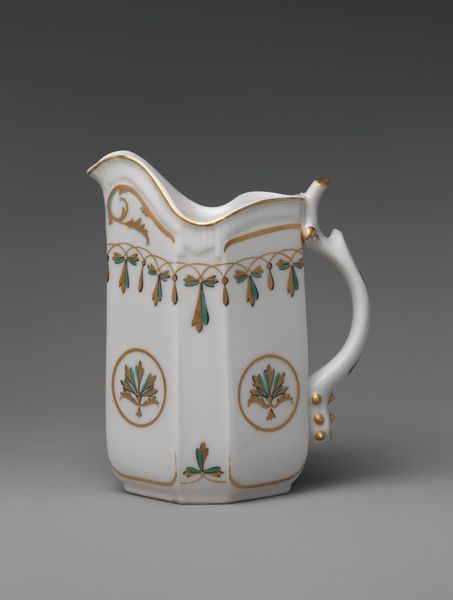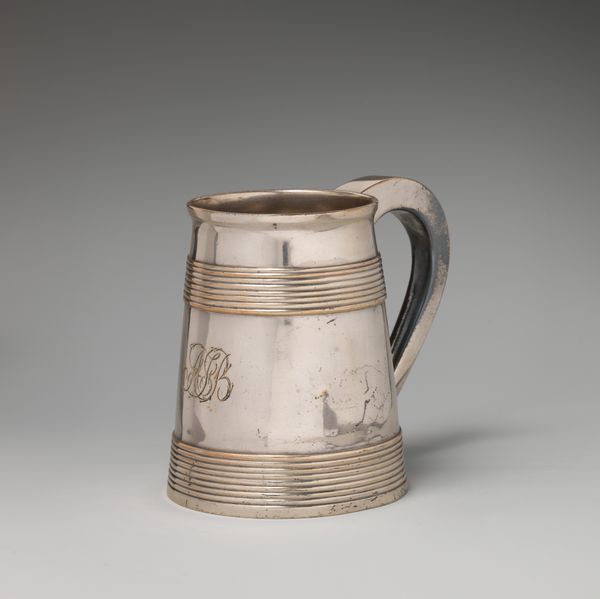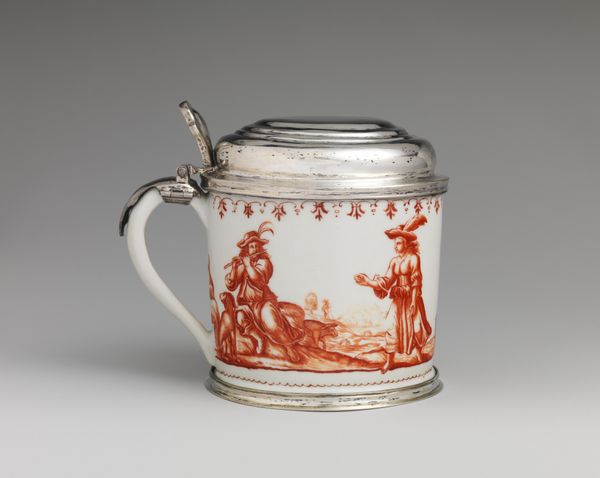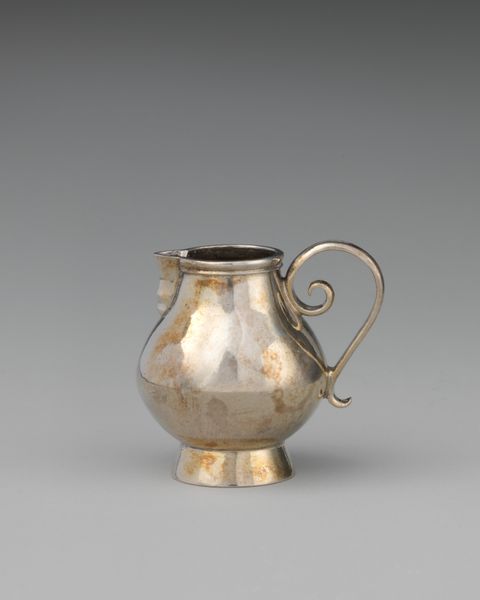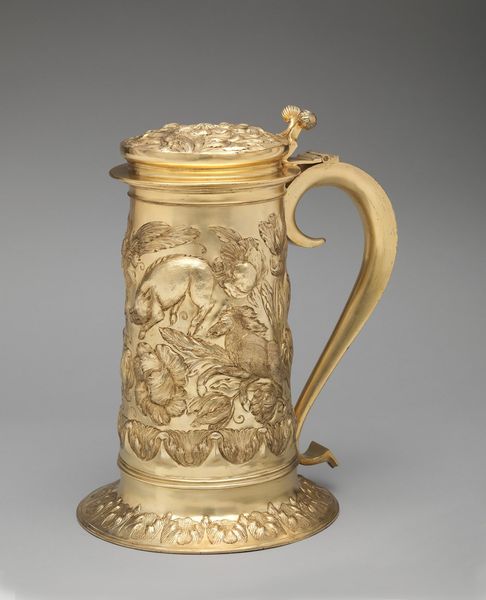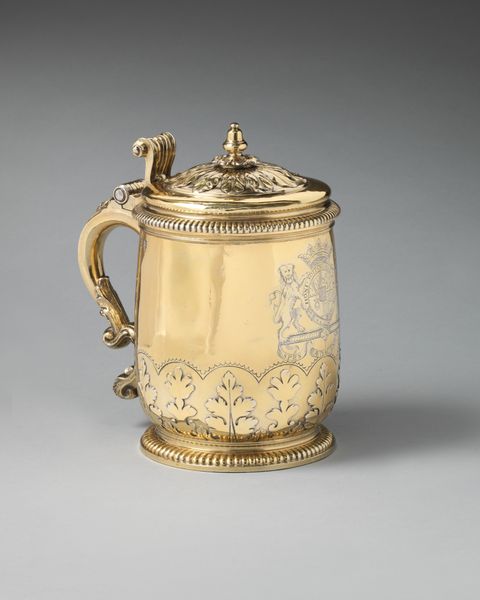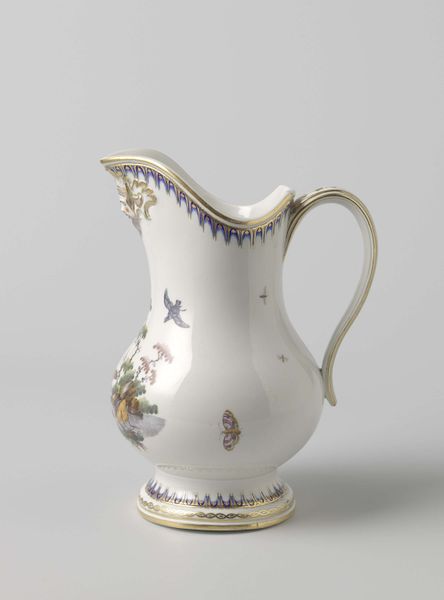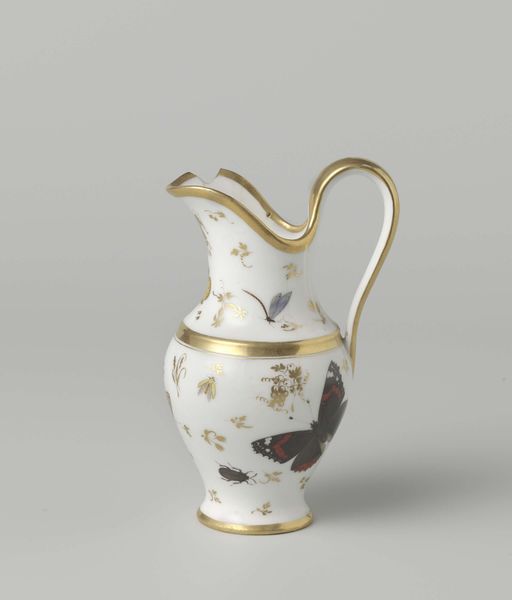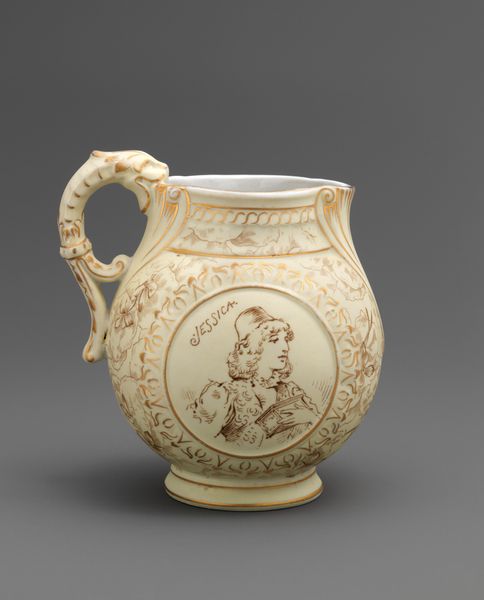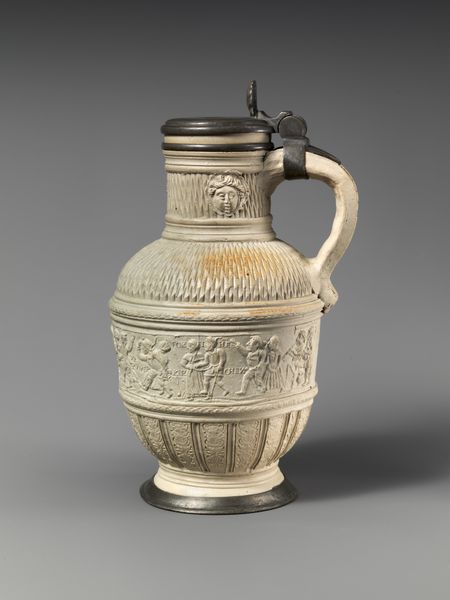
ceramic, earthenware
#
arts-&-crafts-movement
#
ceramic
#
earthenware
#
decorative-art
Dimensions: 8 3/4 in. (22.2 cm)
Copyright: Public Domain
Curator: Here we have a Tankard crafted by Chesapeake Pottery between 1878 and 1888. It's currently part of the Metropolitan Museum of Art's collection. Editor: My immediate reaction is one of subdued elegance. The muted palette paired with intricate botanical motifs create a piece that feels simultaneously ornate and restrained. Curator: The piece embodies the Arts and Crafts movement with its emphasis on handcraftsmanship and decorative art. The earthenware material provides a tactile quality and showcases the artist's mastery in ceramic design. Observe the repetitive geometric patterns forming a sort of underlay against the highlighted sprigs of leaves and flowerets. Editor: Exactly. The flora rendered in raised gold invites us to think about a cultural moment marked by rapid industrialization and environmental transformation. Serving ware like this was meant to reclaim craftsmanship against mass-produced homewares and invite a dialogue between consumerism and local ecologies. The Chesapeake region specifically was a site of labor and agriculture. Were the laborers who harvested the natural material for this piece able to afford it for their own tables? Curator: That raises a critical question of accessibility. But I find the piece's merit in how skillfully the patterns are rendered, not just as adornment but as a structuring principle of design. Consider how the vertical orientation, echoed in the handle’s lines and even the elongated stems, brings a formal harmony and echoes the upward drive for human progress typical of the era. The repetition is both comforting and pleasing to the eye. Editor: Yet it's exactly those ambitions of "progress" we need to critically examine. Who benefits, who is extracted from? Isn’t this an era of dispossession justified through notions of taste and artistry? Even the delicate artistry may serve to conceal wider exploitation within its beautiful, pale façade. Curator: Well, looking at this vessel provides, at the very least, an elegant encounter with artistry of its time. Editor: I’d suggest that encounter can prompt us to reflect not just on craftsmanship, but the messy realities it was wrapped up with.
Comments
No comments
Be the first to comment and join the conversation on the ultimate creative platform.
